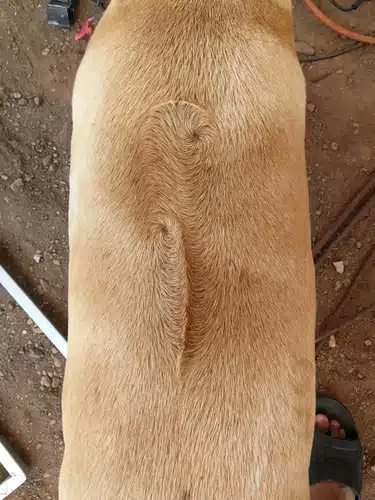Home » Blog » Pet » Pets: Understanding Them » The Wild World of Dog Hair Whorls
Categories
Tags
animal welfare
breed profile
buying a car
buying a pet
Car
car accessories
car care
car features
car insurance
Car safety
car sales
car service
cat
cat behaviour
cat body language
Cat Breeds
cat food
cat insurance
comprehensive car insurance
Dog
Dog Behaviour
dog body language
Dog Breeds
dog food
Dog Insurance
dog training
eco friendly cars
Kitten
New Car
pet accessories
pet activities
Pet Adoption
pet breeders
pet days of the year
pet fun stuff
Pet Health
pet insurance
pet parenting
Pet Safety
pet services
Puppy
rescue pets
road safety
road trip
safe driving
Recent Blog:
Facebook Posts
1 day ago
Growing old sometimes means we can’t take care of pets anymore. Find out some advice on what to do when this happens:![]()
![]() Senior Pet Parents – Contingency Plans for Your Pet – bit.ly/44bzwkS
... See MoreSee Less
Senior Pet Parents – Contingency Plans for Your Pet – bit.ly/44bzwkS
... See MoreSee Less
Senior Pet Parents' Contingency Plans for Pets
www.pd.com.au
Sometimes senior pet parents need more downtime. For older pet owners, this can be tricky to navigate if their dog or cat is full of beans and wants to3 days ago
Before you rev up the engine, let’s run through a checklist of things to do before starting your car. Not only do these steps ensure your safety (and that of others around you), but they also help in maintaining your vehicle's longevity.![]()
![]() Driving Tips: Your Checklist Before Starting Your Car -
... See MoreSee Less
Driving Tips: Your Checklist Before Starting Your Car -
... See MoreSee Less
Driving Tips: Your Checklist Before Starting Your Car
www.pd.com.au
Heading out for a drive? Hold up a second! Whether you're dashing off to work, running errands, or embarking on a road trip adventure, there are a few1 week ago
Are intestinal worms setting up camp in your dog’s gut without paying rent? Here’s how to spot the main culprits and get rid of them too:![]()
![]() Preventing, Identifying and Treating Intestinal Worms in Dogs - bit.ly/43YjCKu
... See MoreSee Less
Preventing, Identifying and Treating Intestinal Worms in Dogs - bit.ly/43YjCKu
... See MoreSee Less
Preventing, Identifying and Treating Intestinal Worms in Dogs
www.pd.com.au
Intestinal worms, such as roundworms in dogs are one of the least glamorous topics on the planet. These intestinal parasites that basically use our dogsEver wondered why your dog has those little patches of hair that grow in a spiral, circular manner? These are called dog hair whorls and the science behind them is actually quite fascinating. You’d be surprised to know that these cowlicks on your dog have actually been studied!
So what do they actually mean and what’s the big deal about hair whorls? Let’s pounce right in …
In this article
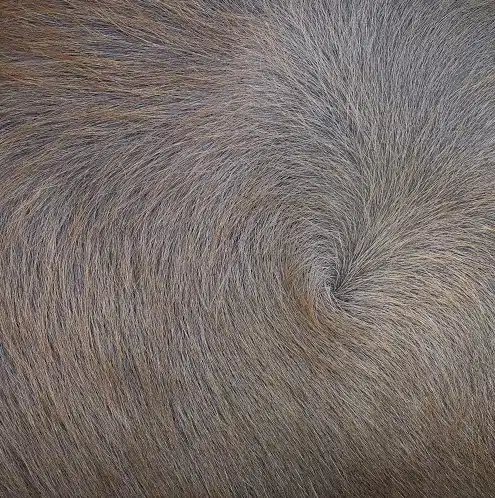
What do dog hair whorls look like?
Dog hair whorls are easy to spot because the hair grows in the opposite direction of the surrounding hair. They can be small or large, and they can be single or multiple. Interestingly, the whorls on the left side of the dog’s body are usually counterclockwise while those on the right side are clockwise.
According to “Hair Whorls in the Dog (Canis familiaris). I. Distribution” by L.M. Tomkins, P.D. Mcgreevy, there are two main types of dog hair whorls: simple and tufted.
- Simple hair whorls are the most common type. They’re characterised by a central point from which the hairs diverge in a flat, swirling pattern.
- Tufted hair whorls are less common. They’re characterised by a central point where the hairs converge from various directions. This creates a tuft of hair at the base of the whorl. The whorls on the dog’s elbows are examples of tufted whorls.
The whorl with a crown
Rhodesian Ridgebacks have a unique type of hair whorl called a “crown.” Crowns are located on either side of the ridge of hair that runs down the back of these dogs.
The ridge should have two identical whorls (circular swirls of hair) that are directly opposite each other. The whorls should not extend further down the ridge than one-third of its length.
The ridge and whorls are so important to this breed that a dog that lacks a ridge will be disqualified from competition. A dog with only one whorl or more than two whorls is also considered to have a serious fault.
So, if you’re thinking about getting a Rhodesian Ridgeback for show purposes, be sure to look for a dog with a good ridge and whorls! It’s one of the things that makes this breed so unique.
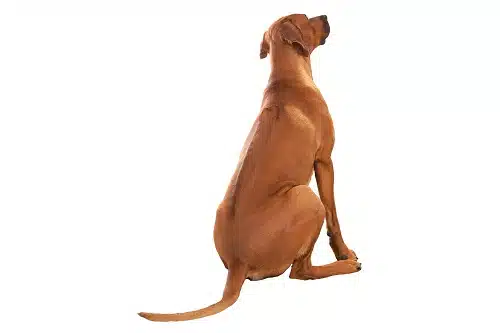
Where are they?
Here are some possible locations of these whirly cowlicks on dogs:
- Chest: This is the most common location – they’re usually found in the middle of the chest, but they can also be found on the sides or upper chest.
- Elbows: Hair whorls are also common on the elbows of dogs – more likely on the back of the elbow
- Rump: Hair whorls can also be found on the rump of dogs.
- Face: Hair whorls are less common on the face of dogs, but they can sometimes be found on the forehead, cheeks, or chin.
- Neck: They’re less common here, but can be found behind the ears or on the throat.
- Abdomen: Cowlicks on dogs here are the least common, but they can sometimes be found on the belly or groin.
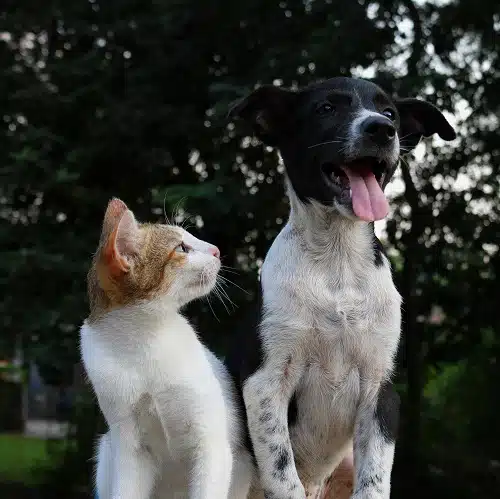
What do dog hair whorls mean?
The meaning of dog hair whorls is still up for debate, though some studies have suggested they may be linked to a dog’s personality and behaviour. For example, one study found dogs with hair whorls on their chest were more likely to be right-pawed, and dogs with hair whorls on their rump were more likely to be outgoing and playful!
Here are some more interesting studies done on whorls:
Excited or not excited?
A study by Sofie Lillebo called “Correlation Between Hair Whorls and Different Types of Behaviours in Dogs” looked at the hair whorls on the chests and shoulders of dogs, and found that dogs with more whorls and whorls that spiralled counter clockwise were more likely to be reactive, or easily excited. This could be because the whorls are a sign of a more active nervous system.
The study was small and more research is needed to confirm these findings. However, it’s an interesting area of research that could help us better understand dog behaviour!
Hair whorls and guide dogs
Another study done by Tomkins L. M., Thomson P. C., McGreevy P. D. called “Associations between motor, sensory and structural lateralisation and guide dog success” found that, statistically, right-pawed dogs that had a counterclockwise whorl on their chest had twice the chance of succeeding in guide dog school when compared to left pawed dogs equipped with a clockwise whorl on their chest!
Dog hair whorls are definitely one of the more interesting quirks of our furry friends. Whether they’re a sign of being left or right pawed, personality, or talent, hair whorls are a unique part of what makes each dog special.
So, next time you’re petting them, take a closer look at their fur. You might just find a few cowlicks on your dog that tell you something interesting about them.
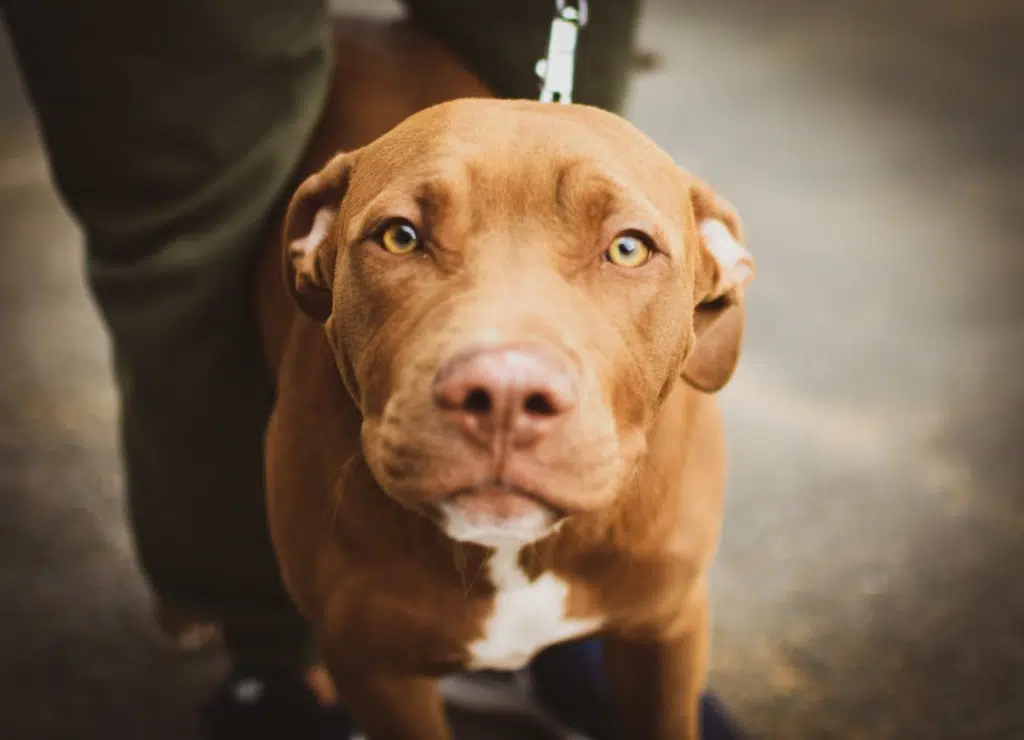
More on wonders of the fur kind
Speaking about hair and pet fur, here are some more interesting articles to delve into:
- How to Remove Pet Fur Off Clothes and Furniture
- Should You Really Shave Your Dog This Summer?
- All About the Cute, Designer Cavoodle
- Simple Ways to Pet Proof Your Car Like a Pro
- Cut the Cost of Living by Grooming Pets at Home
Insurance for when they get into a hairy situation
You never know when your precious pup can get into an accident or come down with an illness, and you’ll always want to give them a soft landing. Having dog insurance in place helps you pay for big and little health bills for aches, scrapes, illnesses and more.
A pet plan from PD Insurance can help pay for bills involving X-rays, diagnostics, unexpected vet visits, surgery and, depending on the level of cover you choose, dental bills too! Why wait ’til it’s too late, get award winning pet insurance today.
Knowing how much pet protection will cost is only a click away.
Share On:

